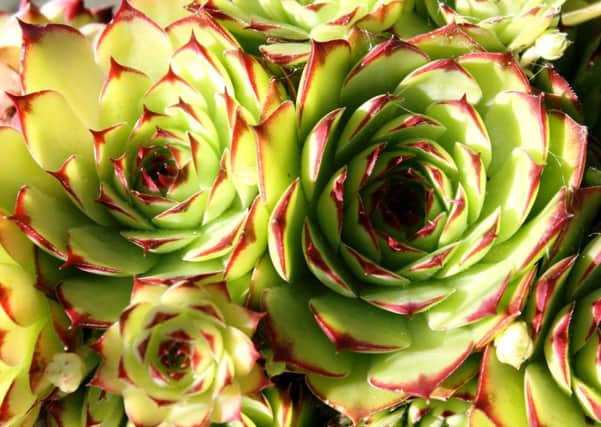A lively addition


And that’s the case with Sempervivums, or houseleeks, the hardy, succulent, alpine plants that grow in the wild between rocks in mountainous regions but which have found a happy home in English gardens where they seem impervious to everything the climate, the soil, the situation or even the gardener can throw at them.
Sempervivum means ‘always alive’ – a reference to the fact that houseleeks can tolerate extreme temperatures and drought. Cover them in ice and snow and they’ll continue to exist as though nothing has changed. Give them a baking July and August (as rare as that rare hen’s tooth) and they seem to relish the heat. These are very special little plants.
Advertisement
Hide AdAdvertisement
Hide AdIt’s the hardiness of Sempervivum that makes them easy-to-keep garden plants. They are ideal for containers, but you’ll find them thriving in rockeries, in gravel gardens, in holes in walls – in fact, just about anywhere a plant can grow, a houseleek can grow. But as with all plants, houseleeks flourish when they are planted in areas and conditions which they prefer. So, plenty of sun and a well-drained soil suits them down to the ground – which is appropriate because most Sempervivums stick close to the ground. And once they gain a roothold, there’s no stopping them. They spread – slowly, because they take life easy – to form mats of wonderful, fleshy vegetation, amazing rosettes of succulent, spirally patterned foliage.
Each rosette is, in fact, a separate plant, and is monocarpic – it flowers once then dies, but is soon replaced by other new rosettes, called offsets. These offsets can be separated and planted up, and will then grow into new clumps. No great skill is required, which is another reason the plant is so popular.
Sempervivums don’t really need feeding, but those grown in containers will appreciate being repotted every year and have their gritty compost perked up with a slow-release fertiliser.
PS: The common name houseleek is believed to stem from the traditional practice of growing plants on the roofs of houses to ward off lightning strikes; Sempervivums are not related to edible leeks, which belong to the onion family.